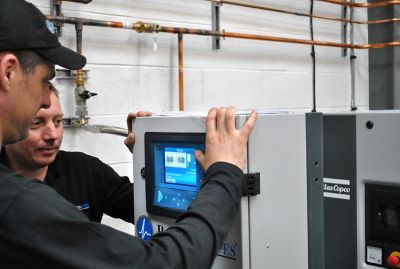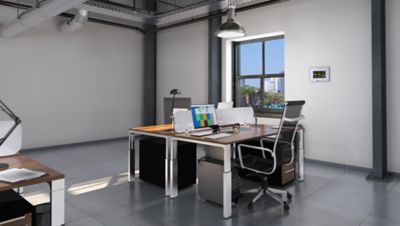Airborne Chemical Exposure Monitoring
Government agencies have established standards for the presence, duration, and frequency of exposure to mitigate the adverse health effects that occur when healthcare workers are exposed to dangerous chemical compounds. Frequent testing is important for safety. We now offer the following testing to help protect your workers
- Waste Anesthetic Gas Disposal Monitoring
- Hazardous Chemical Monitoring
- Surface Testing
- Badge Testing
- Ventilation Testing
Determining airborne chemical exposure is a complicated process that involves determining the airborne chemical type, length of contact, and chemical concentration.

Our processes include identifying the hazardous chemical(s), determining the best monitoring method, formulating an analysis based on the results, devising a response, and documenting the findings.
Using the Gasmet 5000 Infrared Spectrometer, our technicians test and document employee exposure, which allows them to detect and measure workplace airborne chemicals. Our testing includes the applicable ceiling level, a 15-minute STEL (short-term exposure limit), and an eight-hour TWA (time-weighted average). Up-to-the-minute readings are delivered in the tenths-of-a-part-per-million range.
Our team identifies and rectifies problems once they are found, which provides our clients with a safer facility. Best practices to reduce employees’ chemical hazardous exposures can be achieved through ventilation, eliminating chemical leaks and establishing workplace and practice evaluations.
Medical facilities must comply with the OSHA (Occupational Safety and Health Administration) Standard applicable to hazardous chemicals with possible employee exposure. When it comes to these dangerous hospital and laboratory chemicals, monitoring is necessary to discover and decrease their levels. Failure to comply with OSHA requirements may result in fines, liability, and lawsuits. Compliance reassures employees and patients that their health is a priority.
Some of the chemicals included in our testing include:
Nitrous Oxide and Anesthetic Agents, Acetic Acid, Formaldehyde, Xylene, Glutaraldehyde, and Hydrogen Peroxide.
Ventilation Testing

Air change rates and room pressure standards are based on room usage facility type and age. Requirements generally stipulate that air flows from clean to less-clean areas with the goal of protecting patients and workers from exposure to hazardous chemicals and pathogens. Our technicians test ventilation in a variety of health care settings and can equip non-compliant area
After completion of the health care ventilation testing, an easy-to-understand findings report for each room, as well as a CAD room drawing will enable your team to identify underperforming registers. Our team works with facility personnel to adjust ventilation and retest to document compliance.
Some areas we test:
Negative pressure isolation rooms (ie, Airborne Infectious Isolation or AII rooms)
Operating rooms
Autopsy rooms
Microbiology rooms
Chemotherapy prep rooms
Nuclear medicine rooms
Soiled utility rooms
Sterile processing department (central sterile areas)
We measure the following:
- Air change (air exchange) rates
Relative room pressure at every door
Air supply and air return / exhaust flow (CFM)
Total supply and total exhaust
Total volume of the room



